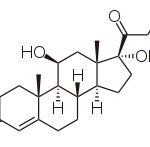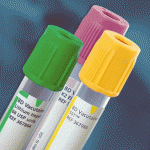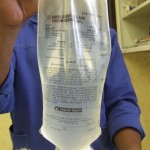Animal Health – Addison’s Disease
ADDISON’S DISEASE in DOGS
WHAT IS ADDISON’S DISEASE IN DOGS?
[ad name=”Tweet”]
Addison’s disease in dogs is a disease in which part of the adrenal gland stops working properly. The adrenal gland produces chemicals and hormones essential to life and a lack of any of these hormones can lead to the death of an animal. The adrenal gland produces the chemical adrenalin, also known as epinephrine, which is what the body produces if a dog gets into a fight or flight situation. This allows animals to fight for their lives or to flee from danger, giving them better vision, increased blood flow to their muscles and an increased heart rate.
The adrenal gland also produces cortisol, which is the body’s own natural form of cortisone. Cortisol is essential to life in that it helps animals cope with stressful situations as well as having an anti inflammatory role. Animals that don’t produce cortisol can literally die from stress. As an example, being hospitalized for a routine procedure like having their teeth cleaned under general anaesthetic will kill these animals. Aldosterone is another important hormone produced by the adrenal gland and it is important in keeping the levels of potassium and sodium in the body constant. This is also very important, as if the potassium gets too high in the bloodstream, it will literally stop the heart. If it gets too low, it leads to muscle weakness, anorexia, nausea and collapse. This is known as an Addisonian crisis.
The adrenal glands are tiny glands that lie near the kidneys. Addison’s disease is a deficiency of either or both cortisol and aldosterone. It is a difficult disease to pick up as there are no specific signs of Addison’s disease that are not seen in many other diseases as well. It s commonly seen in middle aged to older medium to large breed dogs, but smaller dogs like the Scottish Terrier are also known to be prone to Addison’s disease. It is also common in people.
SIGNS OF ADDISON’S DISEASE
General lethargy, which can often be confused with old age

Drinking more water than normal, which can often be confused with diabetes, Cushing’s disease, bladder infections and Kidney disease
Urine leaking and copious, watery urine
Poor skin and coat – coat looks shaggy and dogs sometimes show baldness.
Vomiting and dark diarrhoea
Abdominal Pain
Very slow heart rate
Dogs that are put onto a drip seem to get much better, are sent home and approximately one week later are very ill again
Collapse (Addisonian Crisis)
Unexpected anaesthetic deaths
Exhaustion and death
As you can see, in the early stages it can be confused with any number of other, more common diseases.
DIAGNOSING ADDISON’S DISEASE
The best way to diagnose an animal with Addison’s disease is with a blood test.
A urine test will show a dilute urine sample which can be confused with kidney disease or Cushing’s disease.
There are two blood tests that one can use to check for Addison’s disease:
If the body is deficient in Aldosterone, then a basic blood panel that checks sodium and potassium levels will show a higher potassium and a lower sodium level than normal.Your vet will work out the ratio between the two and if the ratio is less than 27, it is suspicious for Addison’s disease. However, not all dogs that have Addison’s disease are deficient in Aldosterone, which means their sodium and potassium levels will be normal and some sick dogs may be missed if only this test is done and your vet is worried about Addison’s disease.
The definitive way to diagnose Addison’s disease is with a blood test that measures actual cortisol levels in the bloodstream. It is known as the ACTH stimulation test. A basal blood sample is collected, your pet is injected with a drug known as Synacthen and a second blood sample is collected 1.5 to 2 hours later. Synacthen basically stimulates a healthy adrenal gland to produce cortisol. A normal dog would show a normal basal level, then an increase of less than 3X the basal amount 2 hours later. A dog with Cushing’s disease (in which the gland produces too much cortisone) would show a huge increase in cortisol levels, more than 3X the basal amount and a dog that is an Addisonian would show very little difference or only a slight increase in the basal levels.
TREATING ADDISON”S DISEASE
Addisonian dogs lack cortisol and/or aldosterone, thus the treatment we give them replaces one or both of these compounds. Dogs that are very ill (in an Addisonian Crisis) may need to be hospitalized and put onto a saline drip and diuretics such as Furosemide (a diuretic) which wash the potassium out the blood through the kidneys as high levels of potassium can stop the heart and cause arrythmias of the heart.
The saline drip replaces the salt these dogs are lacking as well. These critically ill dogs may also be given a special injectable fast acting form of cortisone (Percorten V (desoxycorticosterone pivlate (DOCP)), to get their cortisone back to normal and allow them to cope with stress. Most dogs that are stabilized are then put onto tablets of Fludrocortisone or “Florinef” that supplement cortisone as well as regulate sodium and potassium levels. Dogs have to remain on these tablets for life. Some dogs have monthly injections of Percorten instead of the tablets. Some dogs are also supplemented with Prednisone tablets as well as Fludrocortisone, especially if they are due to undergo stress, for example, flying to a new home, or going for grooming. After being on the medication for 2-4 weeks, most vets will retest either sodium and potassium or repeat the ACTH stimulation test in order to adjust the level of medication the dogs are on.
PREVENTION
There is nothing you can do to prevent this disease as no lifestyle or dietary causes have been found to say why it occurs. The best is to take your pet into the vet if he or she shows any abnormalities in water consumption and activity levels in the early stages before it becomes life threatening. It can be caused by an immune disease in the adrenal gland (primary Addison’s), or a lack of a hormone produced by the pituitary gland in the brain that would normally stimulate the adrenal gland to produce hormones (secondary Addison’s). Some dogs that have been treated excessively for Cushing’s disease with Lysodren may develop Addison’s disease as a side effect of the medication. These dogs will have to be on treatment for Addison’s for the rest of their lives.
Dr Claire Demmer
BVSc (Hons)
MRCVS
REFERENCES
http://en.wikipedia.org/wiki/Addison%27s_disease






Leave a Reply
You must be logged in to post a comment.